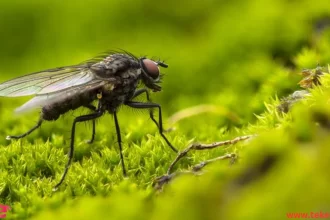The Scotch cat is considered one of the most unique types of cat breeds, characterized by an attractive appearance and an eye-catching personality. We can say that it is one of the oldest known breeds, and its origin goes back to Scotland. Its fame came due to its shape and distinctive characteristics.
The Scotch cat has a calm and friendly personality and is an ideal family companion. She loves to play and enjoy her time in the arms of her owners. They are also intelligent and easy to train, so they are suitable for living in indoor environments. In addition to enjoying good health and average longevity. In this article in TekeTrek Website, we will introduce you to the most important information related to this object. Follow along with us.

About sotch cat
- Many people prefer to have scotch cats in their homes, raise them and take care of them as pets. She moves minds and attracts everyone with her exciting movements. And here is the Scotch cat that sits on the throne of the most important and rarest of these species.
- The story of the Scotch cat from Scotland began with a white cat named Susie, who lived on a Scottish farm in 1961. She was born with a genetic mutation that made her ears folded, unusual for other types of cats. Which caught the attention of many cat breeders. They married her, followed up on her lineage, and took care of her, until they reached good numbers of this unique species.
- The Scotch cat has a medium-sized, stocky body and folded ears, so some liken it to an owl. Their necks are short, and their eyes are large, and they also have short and dense fur. Some species can have long, dense fur. Its color varies from one breed to another. There are white, silver, and blue, in addition to black, brown, and cream.
- It has also been observed recently that there are some species of Scotch cat that have symmetrical colors. There are bi-colored, spotted, and shaded cats. The color of their eyes varies from one species to another. For example, some cats have unique golden, green, or blue eyes. This difference in colors and the harmony between them is due to the mating of this species with other species, and its movement from the motherland of Scotland to many parts of the earth.
Description of the Scotch cat
- Scotch cat length: The length of a Scotch cat ranges between 25.4 and 76.2 cm, starting at the head and ending approximately at the tail.
- Weight of a Scottish cat: The cat weighs between approximately 2.2 and 4.9 kg.
- Lifespan of a Scotch cat: A Scotch cat lives from approximately 11 to 14 years. The circumstances surrounding it and the environmental factor also affect this.
Characteristics of a Scotch cat
The Scotch cat has many characteristics that distinguish it from other cats, the most important of which are:
- The Scotch cat quickly adapts to strange people and new places.
- The Scotch cat is considered a loyal animal and loyal to its owner, and it often attaches itself to only one person in the family.
- The Scottish cat’s ears become less bent when disturbed or sick.
- The ears of a Scottish cat begin to bend three weeks after birth, if it is a carrier of the mutation that makes the ears folded.
- Scotch cat is a perfect friend for children.
- The Scotch cat is characterized by unparalleled high intelligence.
- The Scotch cat can sit like humans or like prairie dogs, if there is noise in the place.
- A Scottish cat can stay alone for a long time at home.
- The Scotch cat is moderately active, as it is neither lazy nor very active.
- The Scotch cat has a very soft and calm voice.
Nutrition for a Scotch cat
Attention must be paid to the quality of food provided to this type of cat, so some important and necessary points must be taken into account, as follows:
- The Scotch cat depends mainly on the nutrients found in animal products, as it is a carnivore.
- The Scotch cat needs high amounts of protein, low amounts of carbohydrates, and moderate amounts of fat. Therefore, we must ensure its availability in meals.
- Foods sold in the markets must be provided, which are dry and canned foods.
- Dry cat food contains between 6% and 10% water, but this type is considered less palatable to cats. So, it is coated with artificial flavors and attracts them.
- Canned food contains 75% water, which makes it more palatable to cats.
- Amino acids found in meat, such as arginine and taurine, are essential for the diet.
- It is preferable for the cat to eat at least two meals a day.
- It is also necessary to take into consideration a group of foods that are recommended to be avoided in the cat’s diet, because they cause many health problems for the Scottish cat, the most important of which are:
- Raw meat in all its forms.
- Fish products for humans, such as tuna, because they lead to neurological disorders.
- Dairy products such as milk.
- Products that contain yeast, as they lead to stomach bloating and thus the accumulation of gases in the digestive system.
- Citrus fruits in all their forms.
- Grapes and raisins are toxic products for cats.
- Raw eggs because they contain salmonella bacteria that are harmful to cats.
- Onions and garlic.
- Avocado causes vomiting and diarrhea in cats.
- Chocolate, especially dark chocolate.
- All drinks containing caffeine.


Diseases that affect the Scotch cat
A Scotch cat can suffer from some diseases and health problems, which are as follows:
- Arthritis in the tail occurs early and is detected when the animal holds its tail tightly or turns away from the person while petting it.
- Diabetes can affect her.
- Hepatitis, which can be more common in older cats.
- Cardiomyopathy.
- Osteochondrosis, which may affect bone and cartilage growth in cats.
- Anemia is when the number of red blood cells is low.
- Obesity, which may affect cats when they overeat
Maintaining a Scotch cat
Here are the most important tips that should be followed to maintain the health of a Scotch cat, which are as follows:
- Giving the necessary vaccinations on time.
- Check the ears regularly and take care of them for fear of the presence of fleas or wax accumulation.
- Clean your teeth regularly every week to protect your teeth and gums from any infections.
- Do not raise a Scottish cat with similar cats of the same breed for fear of diseases and health problems.
- Providing scratching posts for cats so that they do not harm the furniture, and making sure to cut their nails when needed and this is done every two weeks.
- Brush the hair periodically, once a week for short-haired cats and twice for long-haired cats.
- Teach children how to handle and respect a Scottish cat.
- Visit the vet if any problem occurs.
Frequently asked questions about the Scotch cat
Here are some common questions that some people ask, especially those interested in the Scotch cat, the most important of which are:
- What is the price of a Scotch cat?
There is no doubt that this type of cat is considered an expensive species, and determining its price is a difficult issue. It also depends on the age, size and shape of the cat.
- When do Scottish cats’ mate?
The mating period begins when the cat reaches the age of 5 to 9 months, i.e. the estrus cycle. The length of daylight and the weight of the cat play an essential role in the time of the first estrus cycle for female cats.
- How do I know if the cat is hungry or not?
A cat’s meow, i.e. its sound, is a sign that it is hungry or needs water. While if her voice is repetitive and different from usual, this means that she is suffering from some pain.
- Are Scottish cats friendly?
Yes, Scottish cats are very friendly.
Finally, we have reached the conclusion of our article in which we talked about the Scotch cat. We wandered into her private world to reveal to you, dear reader, some facts and information that will make it easier for you to raise and care for her.
It is a wonderful breed of cat, distinguished by its beauty and wonderful personality. She is also a loyal and loving friend who can be a part of your daily life, and always remember that she needs care and attention.






